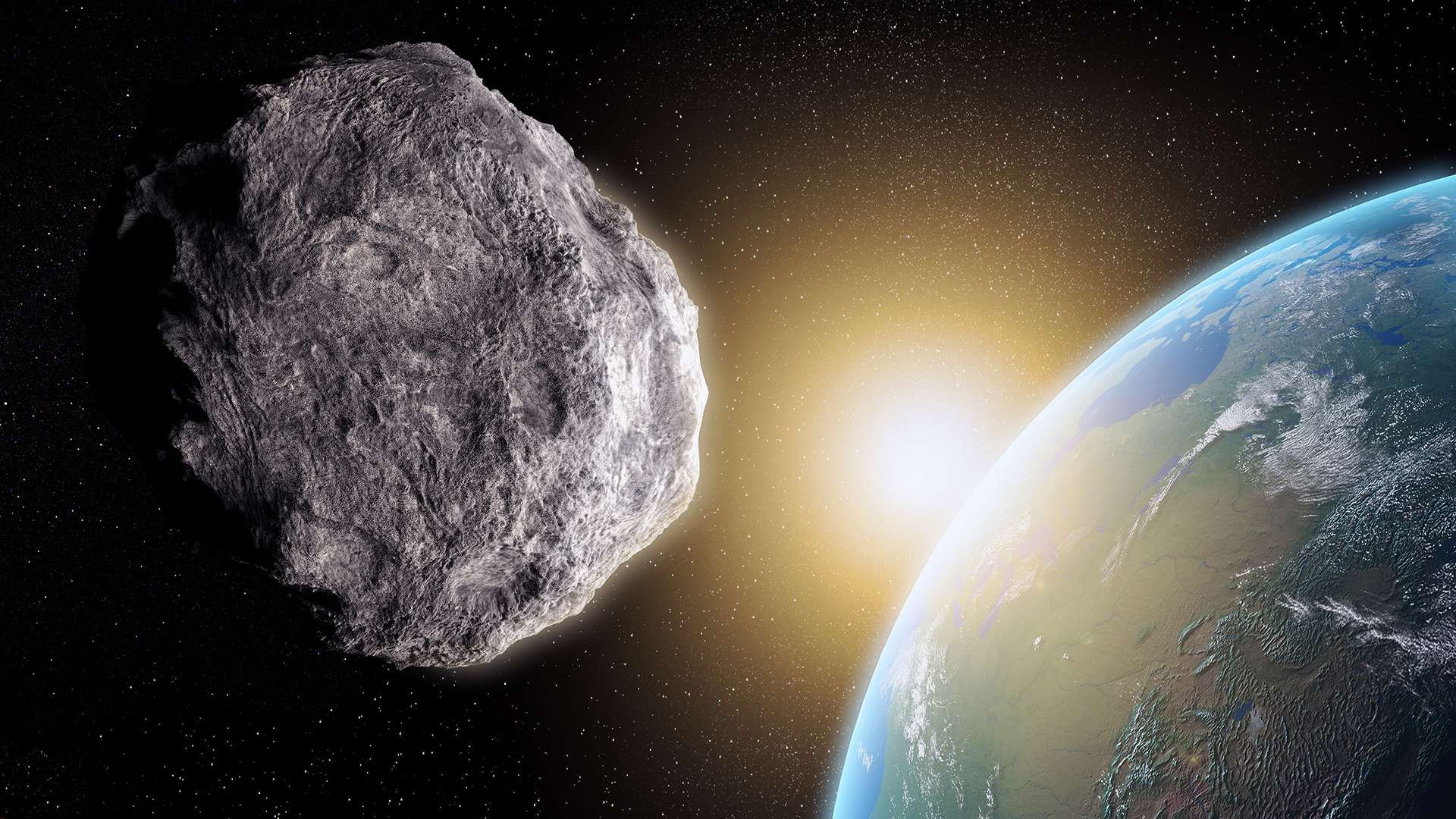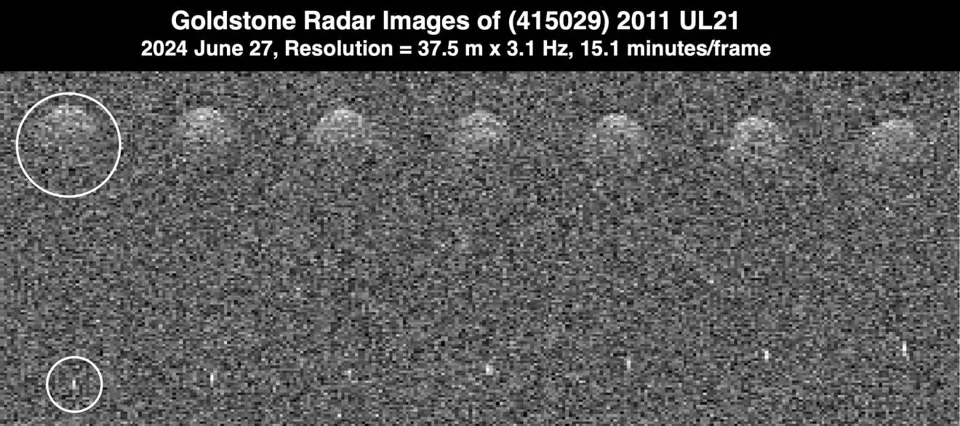
NASA’s radar located in the remote Mojave Desert has successfully captured high-resolution images of formidable asteroids, including a massive one-mile-wide behemoth, as they passed by our planet’s neighborhood. These radar images offer valuable insights into the characteristics and behaviors of these space rocks, contributing to our understanding and preparedness for potential asteroid threats.
Fortunately, there are no known asteroids with a trajectory that poses a threat to Earth for at least the next century. Additionally, the likelihood of an impact from the largest class of asteroids, like the one observed, remains exceedingly low for the next thousand years. Nevertheless, these detailed images provide planetary scientists with critical data for future preparedness against any menacing space rock that may come our way.
“Pics or it didn’t happen!” NASA humorously posted on X, formerly known as Twitter.
The first image showcases the mile-wide (1.5-kilometer) asteroid 2011 UL21 as it traveled 4.1 million miles (6.6 million kilometers) from Earth on June 27. While this distance might seem vast, in astronomical terms, it is relatively close, about 17 times the distance from the Moon to Earth. Interestingly, this asteroid was accompanied by a smaller moonlet orbiting it at a distance of 1.9 miles (3 kilometers).
“It is thought that about two-thirds of asteroids of this size are binary systems. Their discovery is particularly important because we can use measurements of their relative positions to estimate their mutual orbits, masses, and densities, which provide key information about how they may have formed,” explained Lance Benner, a principal scientist at NASA’s Jet Propulsion Laboratory.

Credit: NASA / JPL-Caltech
The next image reveals an impressively detailed view of the 500-foot-wide (150-meter-wide) asteroid 2024 MK, which zipped past Earth at a distance of 184,000 miles (295,000 kilometers) on June 29, closer than the Moon, which is approximately 238,900 miles away. “This was an extraordinary opportunity to investigate the physical properties and obtain detailed images of a near-Earth asteroid,” Benner said.
All these asteroids were captured by NASA’s Goldstone Solar System Radar, a 230-foot-wide (70-meter) radio antenna situated near Barstow, California. NASA scientists employed the radar to beam radio waves at the objects, and the reflected signals provided these remarkable images.
Although the captured asteroids posed no immediate threat, it’s essential to understand the potential risks of asteroid impacts:
- Small Asteroids: A 500-foot-wide asteroid could pose a serious risk if it landed in a populated area. Even a considerably smaller rock, measuring between 100 to 170 feet across, could create a blast big enough to destroy a city like Kansas City.
- Frequent Small Impacts: Every day, about 100 tons of dust and sand-sized particles fall through Earth’s atmosphere and promptly burn up.
- Annual Larger Impacts: On average, an “automobile-sized asteroid” enters our atmosphere and explodes every year.
- Decadal and Centurial Impacts: Objects around 460 feet (140 meters) in diameter strike Earth approximately every 10,000 to 20,000 years.
- Catastrophic Impacts: A “dinosaur-killing” impact from a rock perhaps half a mile across or larger happens on 100-million-year timescales.
| Asteroid Size | Frequency of Impact | Potential Effect |
|---|---|---|
| Dust and sand-sized | Daily | Burns up in the atmosphere |
| Automobile-sized | Yearly | Explodes in the atmosphere |
| 460 feet (140 meters) | Every 10,000 to 20,000 years | Significant regional damage |
| 1 mile (1.5 kilometers) | Every 100 million years | Global catastrophic events |
Understanding and preparing for potential asteroid threats is crucial for planetary defense. Even relatively small rocks can pose significant threats, as evidenced by the surprise 56-foot (17-meter) rock that exploded over Russia in 2013, blowing out windows and causing injuries. NASA’s proactive approach to detecting and characterizing asteroids ensures that we are better prepared to deflect or mitigate any future threats.
The recent detailed images captured by NASA’s radar highlight the importance of continuous monitoring and study of near-Earth objects. These images not only provide scientific insights but also help refine techniques for predicting asteroid trajectories and potential impact scenarios. By analyzing the physical properties and behaviors of these space rocks, scientists can develop more effective strategies for planetary defense.

Credit: NASA / JPL-Caltech
As technology advances, NASA and other space agencies will continue to enhance their capabilities in detecting and characterizing asteroids. Collaborative efforts with international partners will further strengthen global preparedness for potential asteroid impacts. The data gathered from these observations will also contribute to broader scientific research, deepening our understanding of the origins and evolution of asteroids and their interactions with the solar system.
In conclusion, the recent radar images of asteroids captured by NASA’s Goldstone Solar System Radar provide valuable insights into the characteristics and behaviors of these space rocks. While there is no immediate threat from known asteroids, continuous monitoring and study are essential for planetary defense. By understanding and preparing for potential asteroid impacts, we can better protect our planet and ensure the safety of future generations.
Featured Image courtesy of Live Science
